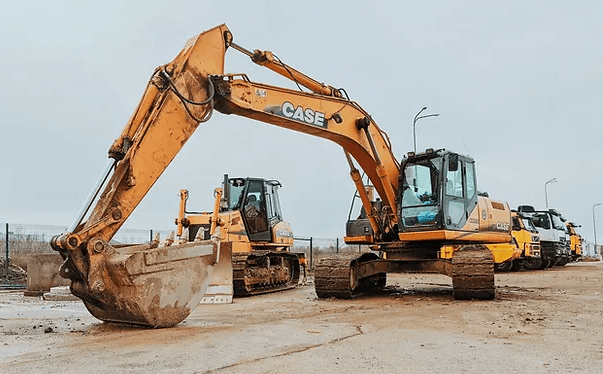Top Construction Trends for 2024

The construction industry is constantly evolving, driven by technological advancements, sustainability efforts, and changing market demands. As we look ahead to 2024, several key trends are poised to redefine how we build, design, and manage projects. These trends not only highlight the industry’s direction but also present opportunities for growth, efficiency, and environmental stewardship. In this article, we’ll explore the top construction trends for 2024, offering insights into the innovations that are shaping the future of the industry.
Embracing Sustainable Construction Practices
Sustainability is no longer just a buzzword in the construction industry; it’s a necessity. In 2024, the focus on sustainable construction practices will continue to grow, driven by stricter regulations, increased awareness of environmental impacts, and the demand for greener buildings. This trend encompasses a range of strategies, from the use of eco-friendly materials to energy-efficient designs.
One significant development is the rise of Net-Zero Energy Buildings (NZEBs). These structures are designed to produce as much energy as they consume, significantly reducing their carbon footprint. This is achieved through a combination of renewable energy sources, such as solar panels, and highly efficient insulation and HVAC systems. The push towards NZEBs is supported by advancements in energy modeling software, which allows architects and engineers to optimize building designs for energy efficiency from the outset.
Additionally, the use of recycled and sustainable materials is gaining traction. Innovations in materials science have led to the development of alternatives like recycled steel, bamboo, and hempcrete, which offer the strength and durability of traditional materials with a fraction of the environmental impact. As green building certifications like LEED and BREEAM become more prevalent, incorporating these materials into projects is becoming a standard practice.
The Rise of Modular and Prefabricated Construction
Modular and prefabricated construction methods are not new, but their adoption is set to surge in 2024. These approaches involve constructing building components off-site in a controlled environment, which are then transported to the construction site for assembly. This method offers numerous advantages, including reduced construction time, lower costs, and improved quality control.
In 2024, we can expect to see a broader application of modular construction across various sectors, including residential, commercial, and even industrial projects. The flexibility of this approach allows for faster project delivery, which is particularly beneficial in urban areas where space and time constraints are significant. Moreover, prefabrication is becoming more sophisticated, with the integration of advanced technologies like 3D printing and robotic automation, which further enhance precision and efficiency.
Another key driver of this trend is the growing demand for affordable housing. Modular construction offers a viable solution to this challenge, enabling the rapid production of high-quality, cost-effective housing units. As governments and private developers seek to address housing shortages, modular construction is likely to play a pivotal role in meeting these needs.
Advanced Construction Technologies: AI, Robotics, and Beyond
The construction industry has been relatively slow to adopt new technologies, but that is changing rapidly. In 2024, we will see an increased integration of advanced technologies such as Artificial Intelligence (AI), robotics, and the Internet of Things (IoT) into construction processes.
AI is transforming how projects are planned, managed, and executed. Through predictive analytics, AI can forecast potential delays, cost overruns, and safety risks, allowing project managers to make informed decisions that mitigate these issues. AI-powered tools are also enhancing the design phase, enabling architects to create more efficient, sustainable, and aesthetically pleasing structures by analyzing vast amounts of data in real-time.
Robotics is another area where significant advancements are being made. Autonomous machines and drones are increasingly being used for tasks such as site surveys, bricklaying, and even welding. These robots not only improve efficiency and precision but also reduce the risk of accidents on construction sites. As robotic technology continues to evolve, we can expect to see more complex tasks being automated, further revolutionizing the industry.
The Internet of Things (IoT) is also playing a critical role in modern construction. IoT devices are being used to monitor construction sites in real-time, providing data on everything from equipment usage to worker safety. This connectivity allows for better resource management, increased safety, and the ability to quickly address any issues that arise on-site. In 2024, IoT integration will likely become standard practice, leading to smarter, more efficient construction projects.
Smart Buildings and Infrastructure
As the world becomes more interconnected, the demand for smart buildings and infrastructure is on the rise. These structures are equipped with advanced systems that can monitor, manage, and optimize various building functions, such as lighting, heating, ventilation, and security.
In 2024, the construction of smart buildings will become more prevalent, driven by the need for energy efficiency and the desire for enhanced occupant comfort. These buildings utilize smart sensors and automated systems to adjust settings based on real-time data, ensuring optimal performance and reducing energy waste. For example, smart HVAC systems can learn the habits of occupants and adjust temperatures accordingly, while smart lighting systems can automatically dim or brighten based on natural light levels.
Furthermore, the concept of smart cities is gaining momentum. These urban areas are designed with integrated technologies that improve the quality of life for residents, reduce environmental impact, and enhance the efficiency of city services. In 2024, we can expect to see more construction projects that align with smart city initiatives, including the development of intelligent transportation systems, energy-efficient infrastructure, and sustainable urban planning.
The Importance of Resilient Design
In an era of increasing climate change and natural disasters, resilient design is becoming a top priority in the construction industry. Resilient buildings are designed to withstand and recover from extreme weather events, such as hurricanes, floods, and earthquakes, ensuring the safety of occupants and the longevity of the structure.
One trend gaining traction is the use of climate-resilient materials and construction techniques. For instance, materials like fiber-reinforced concrete and cross-laminated timber are being used to create structures that are more resistant to natural disasters. Additionally, architects are incorporating features such as elevated foundations, reinforced walls, and impact-resistant windows to enhance the durability of buildings.
Resilient design is also closely linked to sustainability. As the effects of climate change become more pronounced, there is a growing recognition of the need to build structures that not only minimize environmental impact but also can adapt to changing conditions. In 2024, we will see a greater emphasis on designing buildings that are both sustainable and resilient, ensuring they can withstand the challenges of the future.
Construction Workforce: Training and Safety Innovations
The construction workforce is the backbone of the industry, and in 2024, there will be a strong focus on improving training and safety measures for workers. As new technologies and materials are introduced, it is crucial that workers are adequately trained to use them effectively and safely.
Virtual Reality (VR) and Augmented Reality (AR) are becoming powerful tools for worker training. These technologies allow workers to practice complex tasks in a controlled environment, reducing the risk of errors on the actual job site. For example, VR can simulate hazardous conditions, such as working at heights or in confined spaces, allowing workers to develop the necessary skills and confidence to handle these situations safely.
Safety innovations are also a key trend. Wearable technology, such as smart helmets and safety vests equipped with sensors, can monitor workers’ vital signs and environmental conditions, alerting them to potential hazards before accidents occur. In 2024, the use of these technologies is expected to become more widespread, leading to safer construction sites and a reduction in workplace injuries.
The Shift Towards Circular Construction
Circular construction is an emerging trend that focuses on minimizing waste and maximizing resource efficiency throughout the building’s lifecycle. This approach challenges the traditional linear model of “take, make, dispose” by promoting the reuse and recycling of materials.
In 2024, circular construction practices will gain more attention as the industry seeks to reduce its environmental footprint. This includes designing buildings with materials that can be easily disassembled and repurposed, as well as incorporating recycled materials into new projects. The concept of building deconstruction—carefully dismantling structures to salvage valuable materials—will become more common, offering an alternative to demolition.
Furthermore, circular construction aligns with the growing emphasis on sustainability. By adopting circular principles, construction companies can reduce their reliance on virgin resources, lower carbon emissions, and contribute to a more sustainable built environment. This shift is also driven by increasing regulations and incentives aimed at promoting waste reduction and resource efficiency in the construction sector.
Digital Twin Technology: A New Frontier in Construction Management
Digital Twin technology is revolutionizing construction management by creating a virtual replica of a physical building or infrastructure. This digital model allows project managers to monitor and manage the construction process in real-time, from design through to completion and beyond.
In 2024, the use of Digital Twins will become more widespread, particularly in large-scale projects. These virtual models provide a comprehensive view of the project, enabling better decision-making and improved collaboration among stakeholders. For example, a Digital Twin can simulate how a building will perform under different conditions, such as extreme weather or high occupancy, allowing engineers to make necessary adjustments before construction begins.
Moreover, Digital Twins are invaluable for ongoing maintenance and operation. Once a building is completed, the Digital Twin continues to provide real-time data on the structure’s performance, helping facility managers optimize energy use, schedule maintenance, and extend the building’s lifespan. As the technology becomes more sophisticated, it will play an increasingly important role in the construction industry, offering new levels of efficiency and precision.
The Role of Blockchain in Construction
Blockchain technology is making its way into the construction industry, offering new ways to manage contracts, payments, and supply chains with enhanced transparency and security. In 2024, we can expect to see more construction companies adopting blockchain to streamline operations and reduce the risk of fraud and disputes.
One of the key applications of blockchain in construction is smart contracts. These self-executing contracts automatically enforce the terms of an agreement when certain conditions are met, eliminating the need for intermediaries and reducing the potential for disputes. For example, a smart contract could release payment to a contractor once a specific milestone is completed and verified, ensuring timely and accurate payments.
Blockchain also enhances supply chain management by providing a secure, transparent record of transactions. This can help prevent issues such as counterfeiting, delays, and miscommunications, which are common in complex construction projects. By using blockchain, construction companies can improve accountability and trust among all parties involved, leading to more efficient and successful projects.
The Future of Construction in 2024 and Beyond
The construction industry is on the brink of a transformative era, driven by innovations in technology, sustainability, and design. As we move into 2024, these trends will not only reshape how buildings are constructed but also how they are managed, maintained, and experienced by their occupants.
From the rise of modular construction and smart buildings to the integration of AI and blockchain, the future of construction is filled with exciting possibilities. By staying ahead of these trends, industry professionals can ensure they are well-equipped to meet the challenges and opportunities that lie ahead.
FAQs
What are Net-Zero Energy Buildings?
Net-Zero Energy Buildings (NZEBs) are structures designed to produce as much energy as they consume over the course of a year. This is achieved through a combination of energy-efficient designs and renewable energy sources, such as solar panels. The goal of NZEBs is to minimize the building’s carbon footprint and reduce its reliance on non-renewable energy sources.
How is modular construction different from traditional construction?
Modular construction involves building components of a structure off-site in a controlled environment, which are then transported to the construction site for assembly. This method is faster, more cost-effective, and offers better quality control compared to traditional construction, where the entire building is constructed on-site from start to finish.
What role does AI play in the construction industry?
AI is used in the construction industry for various purposes, including project planning, design optimization, and predictive analytics. AI-powered tools can analyze vast amounts of data to forecast potential issues, such as delays or cost overruns, and suggest solutions to mitigate them. AI also enhances the design process by helping architects create more efficient and sustainable structures.
What is the significance of smart buildings?
Smart buildings are equipped with advanced systems that monitor, manage, and optimize building functions, such as lighting, heating, and security. These systems use real-time data to adjust settings, improving energy efficiency and occupant comfort. The significance of smart buildings lies in their ability to reduce energy consumption, enhance safety, and provide a more comfortable living or working environment.
How does Digital Twin technology benefit construction projects?
Digital Twin technology creates a virtual replica of a physical building or infrastructure, allowing project managers to monitor and manage the construction process in real-time. This technology improves decision-making, collaboration, and efficiency by providing a comprehensive view of the project. Digital Twins are also useful for ongoing maintenance and operation, as they continue to provide data on the building’s performance after construction is completed.
What is circular construction?
Circular construction is an approach that focuses on minimizing waste and maximizing resource efficiency throughout a building’s lifecycle. This involves designing buildings with materials that can be easily disassembled and repurposed, incorporating recycled materials, and promoting the reuse of resources. Circular construction aims to reduce the environmental impact of the construction industry and contribute to a more sustainable built environment.
Conclusion
The construction industry in 2024 is set to embrace a range of transformative trends that will reshape the way we build, design, and manage projects. From sustainable practices and modular construction to the integration of advanced technologies like AI, robotics, and blockchain, the future of construction is both innovative and exciting. By staying informed and adapting to these trends, construction professionals can not only meet the demands of today but also prepare for the challenges and opportunities of tomorrow.






